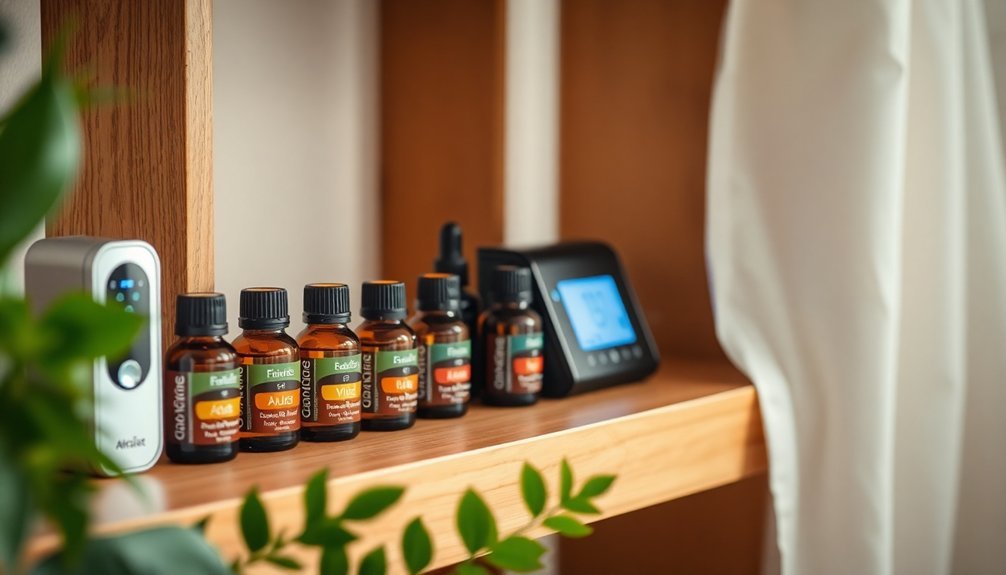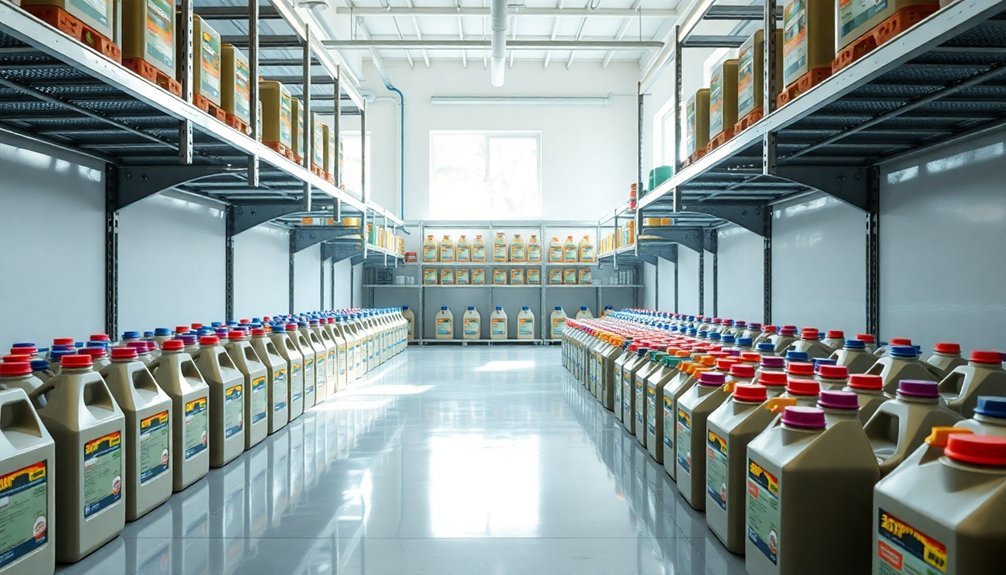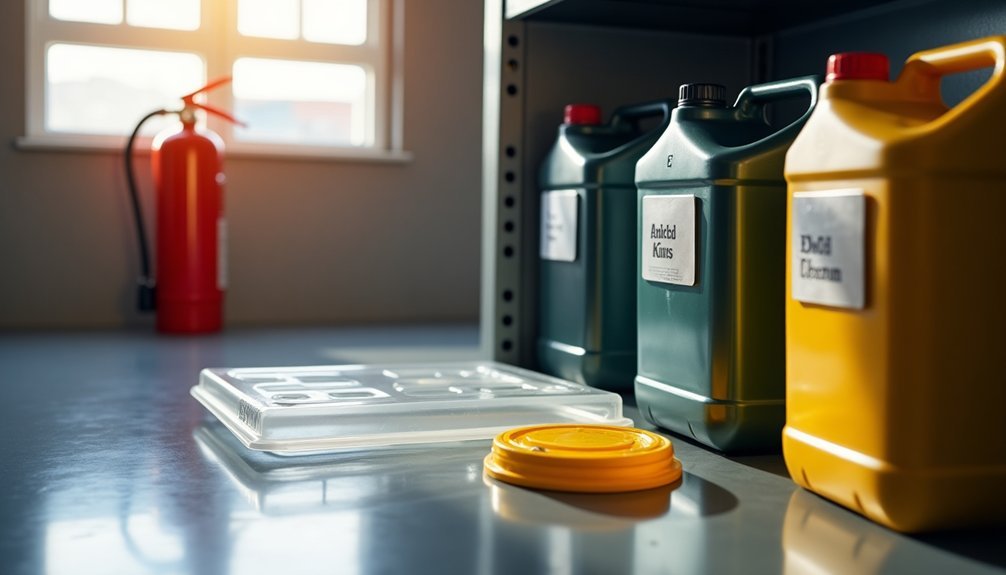Store your oils safely by following three essential protection tips. Keep them at temperatures between 5-10°C and away from direct sunlight to prevent degradation. Choose high-quality containers made of dark glass, cedarwood, or rust-resistant metal, and position them at least 1.8 meters from buildings. Maintain a clean, dry storage environment and always handle oils with proper protective equipment. These fundamentals will set you up for deeper oil storage knowledge.
Temperature Control: The Key to Preserving Your Essential Oils

When it comes to preserving your essential oils, proper temperature control plays a significant role in maintaining their quality and effectiveness.
You'll want to store your oils between 5-10 degrees Celsius for ideal preservation, especially citrus and carrier oils. While room temperature is acceptable, keep them away from direct sunlight and heat sources like stoves or heating vents. Store all essential oils in dark glass containers to protect against damaging UV light exposure.
Consider refrigerating your oils during hot summer months to slow down oxidation. This is particularly beneficial for citrus oils, though some varieties like Rose Otto and Aniseed may solidify and need warming before use.
You can even freeze your oils safely, as consistent cold temperatures help maintain their potency. Just remember that extreme temperature changes can alter their chemical composition and weaken their therapeutic properties, so choose a stable storage location.
Container Selection and Proper Positioning
Selecting the right storage container and positioning it correctly can make or break your oil storage system. Choose containers made from high-quality materials like cedarwood, rust-resistant metal, or sturdy plastic that won't react with your oils.
Essential oils require extra care, as they need to be protected from sunlight to maintain their therapeutic properties.
Look for designs with adjustable compartments and secure locking mechanisms to protect different bottle sizes.
When positioning your containers, maintain safety distances of at least 1.8 meters from buildings and combustible materials. You'll want to guarantee easy access for maintenance while keeping them away from high-traffic areas like driveways and forklift routes.
For smaller tanks, place them at least 3 meters from homes and properties. If you're storing used cooking oil, position containers close to kitchen exits for convenient transfers while maintaining proper safety clearances.
Clean Storage Environment and Handling Practices

A clean and organized storage environment forms the foundation of proper oil maintenance.
You'll need to keep your storage area dry, well-ventilated, and at a stable temperature to prevent lubricant degradation.
Make certain you're using cement floors to minimize dust and install explosion-proof lighting for safety.
When handling oils, always remember these essential practices:
- Wear proper protective equipment including gloves and safety goggles
- Use spill containment trays and clean up any leaks immediately
- Keep containers sealed when not in use to prevent contamination
- Implement a First-In, First-Out (FIFO) system for inventory rotation
Store your lubricants indoors and away from chemicals and solvents.
Maintaining a safety data sheet for each lubricant type is crucial for understanding potential hazards and proper handling procedures.
Maintain separate areas for new and used oils, and guarantee you have enough space to maneuver safely during handling operations.
Frequently Asked Questions
How Often Should Bulk Storage Tanks Undergo Professional Inspection and Maintenance?
You'll need monthly routine inspections, a thorough external inspection every 5 years, and your first internal inspection after 10 years. After that, follow API 653 procedures to determine future internal inspection intervals.
What Is the Maximum Recommended Stacking Height for Oil Storage Drums?
For plastic drums, you'll want to stack them maximum two-high for column stacking, or three-high with pallets. Steel drums can be stacked four-high if they contain materials with specific gravity below 1.5.
Can Different Oil Grades Be Stored in the Same Ventilation System?
You shouldn't store different oil grades in the same ventilation system because varying sulfur contents can compromise safety and efficiency. It's best to maintain separate storage areas with dedicated ventilation for each grade.
What Emergency Response Procedures Should Be in Place for Oil Spills?
You'll need to secure the site, notify authorities, contain the spill with booms and absorbents, clean up using proper equipment, and document everything. Don't forget to complete a Spill Incident Report afterward.
How Long Can Opened Oil Containers Maintain Their Quality Under Ideal Conditions?
You'll get the best quality from your opened oil containers for up to one year when you store them at temperatures between 0-29°C, keep them tightly sealed, and protect them from moisture and direct sunlight.
In Summary
You'll get the most from your essential oils by following these three fundamental storage practices. Keep temperatures stable and cool, choose appropriate dark glass containers, and store them away from direct sunlight. Don't forget to maintain a clean storage area and handle bottles with clean hands. With these simple protective measures, you'll preserve your oils' therapeutic properties and extend their shelf life.





Leave a Reply